Abstract
Nonpathogenic Fusarium oxysporum Fo47b10 combined with Pseudomonas putida WCS358 efficiently suppressed fusarium wilt of carnations grown in soilless culture. This suppression was significantly higher than that obtained by inoculation of either antagonistic microorganism alone. The increased suppression obtained by Fo47b10 combined with WCS358 only occurred when Fo47b10 was introduced at a density high enough (at least 10 times higher than that of the pathogen) to be efficient on its own. P. putida WCS358 had no effect on disease severity when inoculated on its own but significantly improved the control achieved with nonpathogenic F. oxysporum Fo47b10. In contrast, a siderophore-negative mutant of WCS358 had no effect on disease severity even in the presence of Fo47b10. Since the densities of both bacterial strains at the root level were similar, the difference between the wild-type WCS358 and the siderophore-negative mutant with regard to the control of fusarium wilt was related to the production of pseudobactin 358. The production of pseudobactin 358 appeared to be responsible for the increased suppression by Fo47b10 combined with WCS358 relative to that with Fo47b10 alone.
Full text
PDF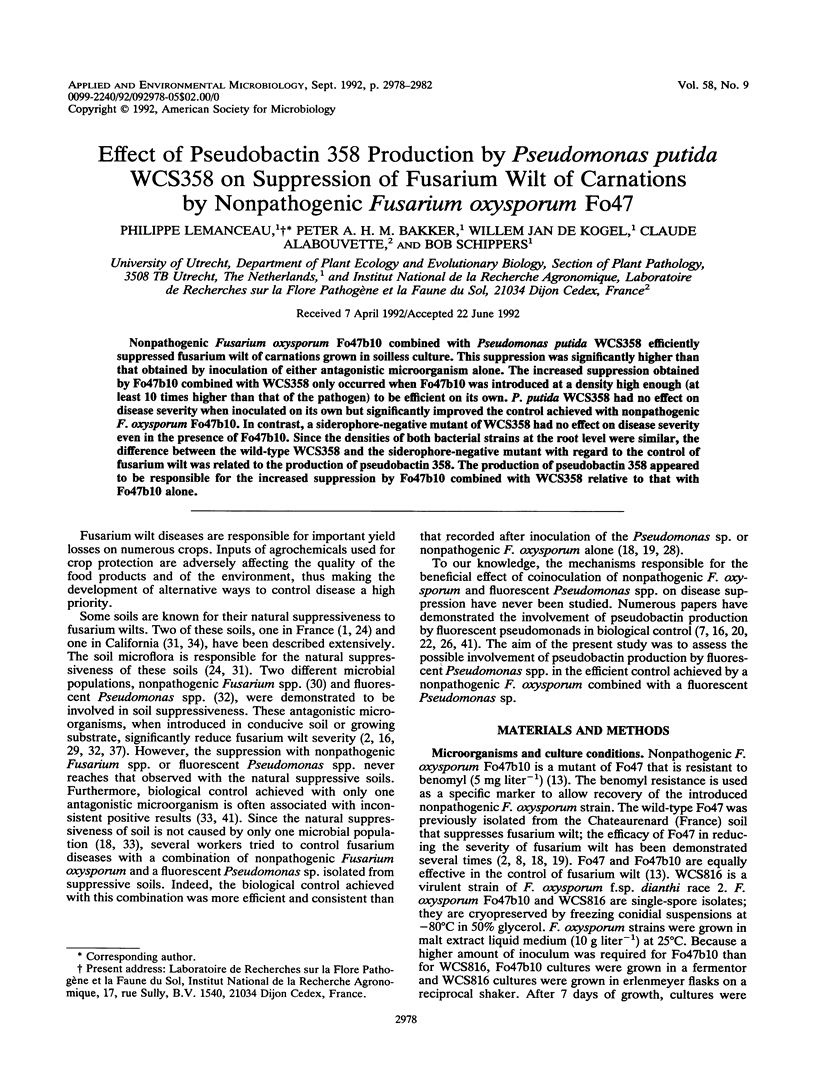
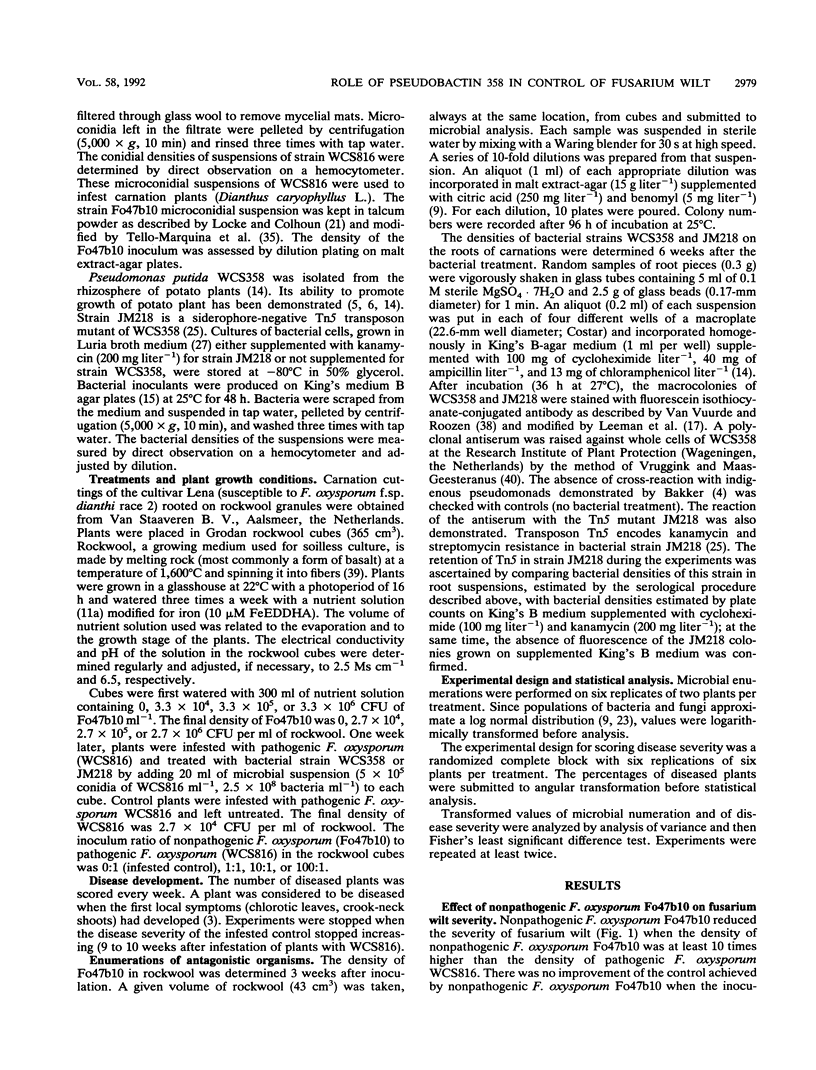
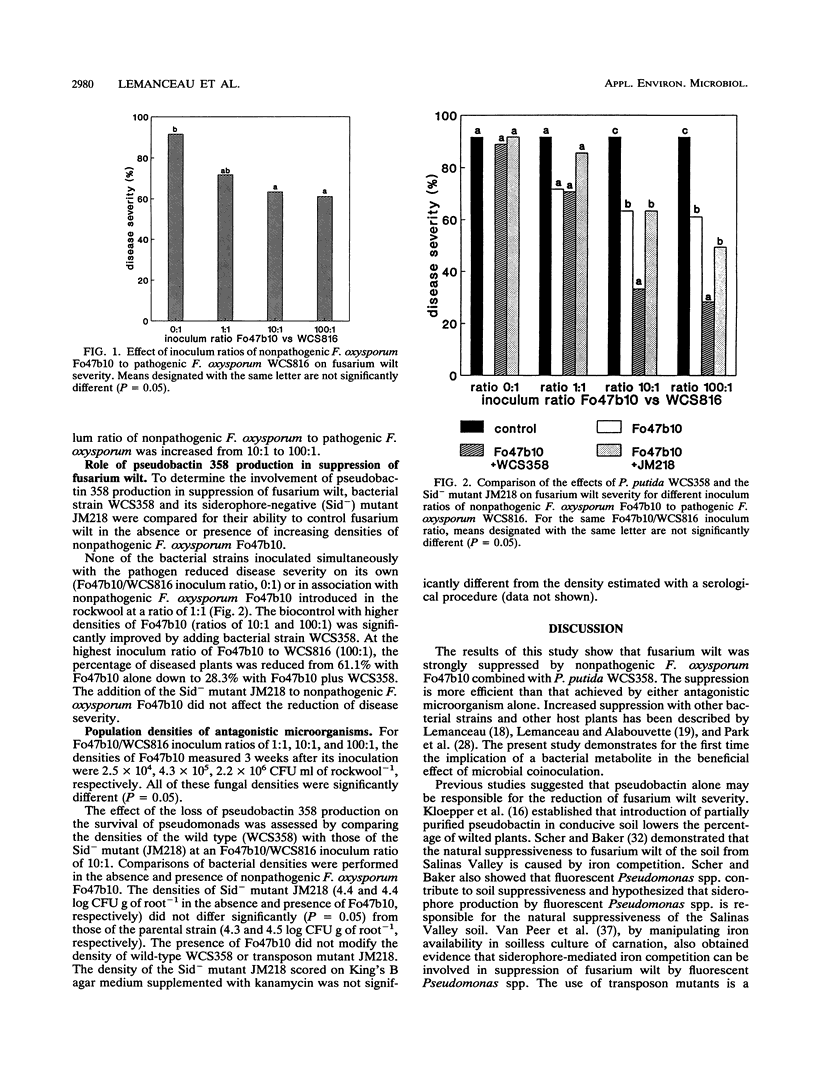
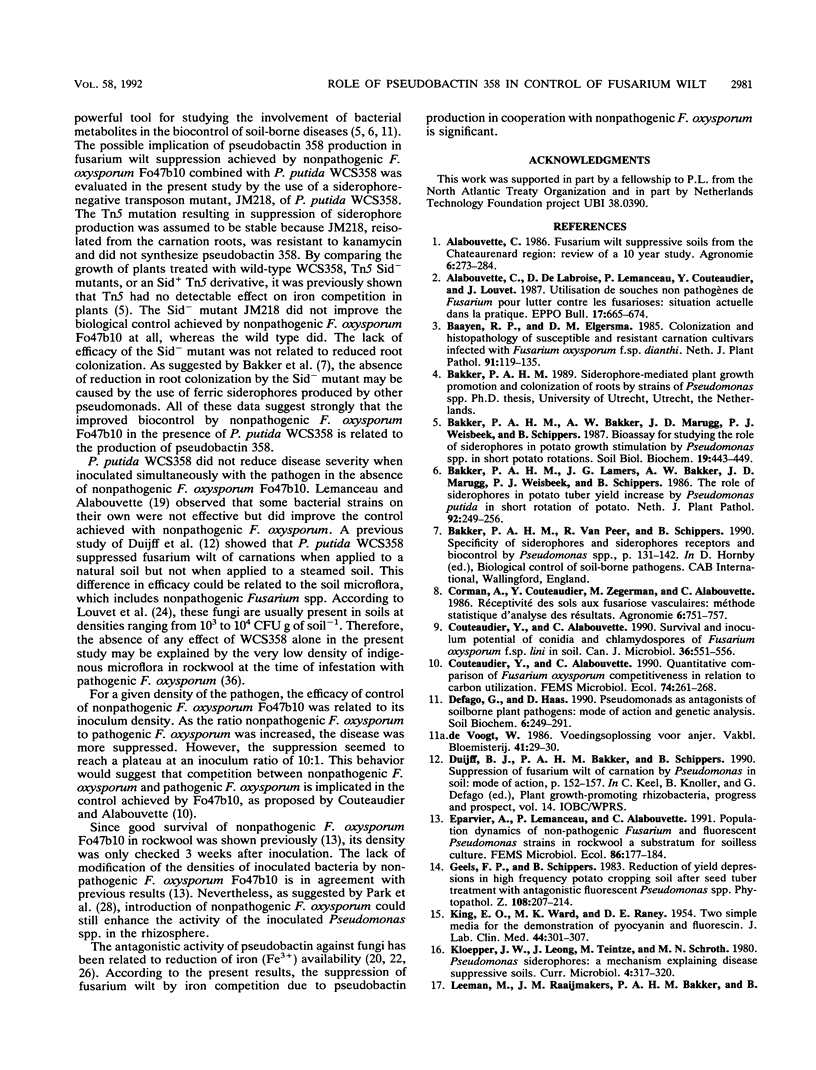
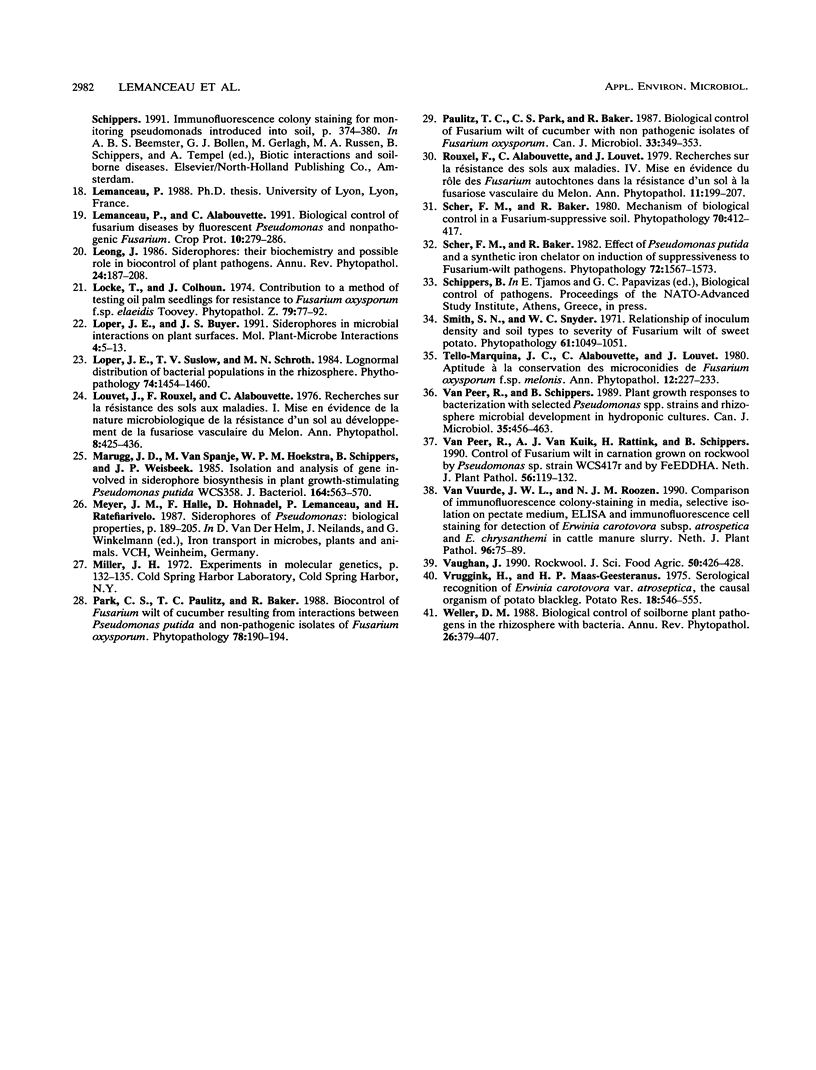
Selected References
These references are in PubMed. This may not be the complete list of references from this article.
- Couteaudier Y., Alabouvette C. Survival and inoculum potential of conidia and chlamydospores of Fusarium oxysporum f.sp. lini in soil. Can J Microbiol. 1990 Aug;36(8):551–556. doi: 10.1139/m90-096. [DOI] [PubMed] [Google Scholar]
- KING E. O., WARD M. K., RANEY D. E. Two simple media for the demonstration of pyocyanin and fluorescin. J Lab Clin Med. 1954 Aug;44(2):301–307. [PubMed] [Google Scholar]
- Liu D. Y., Jennings M. G., Baker H. W. Correlation between defective motility (asthenospermia) and ATP reactivation of demembranated human spermatozoa. J Androl. 1987 Sep-Oct;8(5):349–353. doi: 10.1002/j.1939-4640.1987.tb00974.x. [DOI] [PubMed] [Google Scholar]
- Marugg J. D., van Spanje M., Hoekstra W. P., Schippers B., Weisbeek P. J. Isolation and analysis of genes involved in siderophore biosynthesis in plant-growth-stimulating Pseudomonas putida WCS358. J Bacteriol. 1985 Nov;164(2):563–570. doi: 10.1128/jb.164.2.563-570.1985. [DOI] [PMC free article] [PubMed] [Google Scholar]


